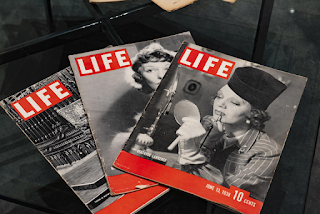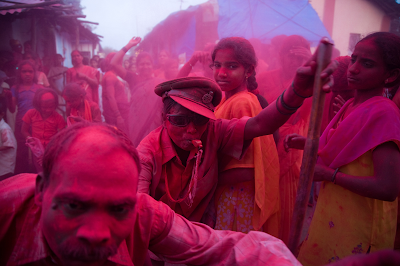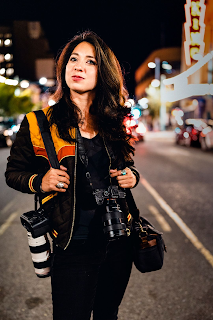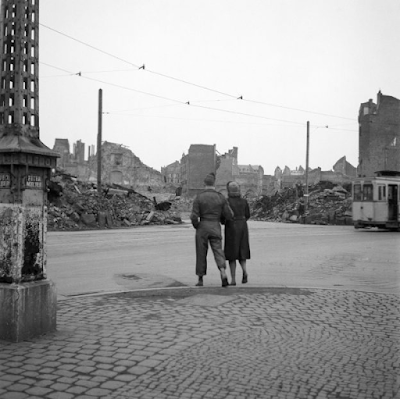Via The Suffolk Journal
October 12, 2022
By Leo Woods
The Museum of Fine Arts opened its newest exhibit, “LIFE Magazine and the Power of Photography,” on Oct. 9, allowing patrons to step back in time and experience some of the most pivotal moments of the 20th century captured on film.
The exhibit, made in collaboration with Princeton University Art Museum, details the genesis of LIFE, which was published weekly from 1936-1972. Henry R. Luce, the founder of LIFE, took inspiration from European picture magazines to create a publication that would be both visually enticing and informative to the American people. His work was a success, as LIFE regularly reached 1 in 4 Americans during the years of its publication, according to the MFA.
As visitors walk through the exhibit, they see the process by which LIFE was developed and found its niche over time. With unique insight into the photography process and how stories were developed for the magazine, the exhibit seeks to examine how American views of the 20th century were shaped by magazines from the period.
The works of over 30 photographers are featured in the exhibit, including Margaret Bourke-White, Robert Capa, Frank Dandrige and Gordon Parks. Each photographer’s signature style and vision are clear in their use of composition and perspective, from Bourke-White’s empowering portraits of female steelworkers in Indiana to Dandrige’s heartbreaking still at the bedside of Sarah Jean Collins, one of the victims of the 1963 bombing at the 16th Street Baptist Church in Birmingham, Ala.
One of the most striking parts of the exhibit is the section titled “Documenting War,” which shows how photojournalists for LIFE were on the front lines of World War II and the Vietnam War, capturing historical images that allowed Americans to see the unfiltered reality of conflict overseas. Capa was one of only four photographers permitted to document the storming of Normandy, France, and the slightly shaky picture of soldiers running up the beach through the waves was published in LIFE at least eight times, according to the caption underneath the image.
While LIFE sought to bring nuance to stories with their photography, the magazine’s audience primarily consisted of white, middle-class Americans, and the photo essays reflected the attitudes of that group. When George Rodger and Bourke-White’s haunting photos of the recently liberated German concentration camps were published in 1945, LIFE refused to identify victims of the Holocaust as Jewish, reinforcing the anti-semitic sentiment in the United States at the time.
LIFE’s pieces also portrayed the U.S. as a “savior” of individuals like Japanese-Americans who were forced into internment camps in the aftermath of the bombing at Pearl Harbor. The magazine published letters to the editor criticizing the inaccurate depiction of the camps and the unfair treatment of the incarcerated residents, but the majority of reader responses “expressed vehemently xenophobic anti-Japanese sentiments,” according to a caption beside images of the camps.
In an effort to highlight the bias and discrepancies still present in journalism today, the MFA has included immersive works by contemporary artists Alfredo Jaar, Alexandra Bell and Julia Wachtel dispersed throughout the exhibit.
Jaar’s featured pieces include work from his Rwanda Project, which documented the aftermath of the Rwandan genocide in 1994. Jaar called the project an “exercise in representation,” challenging the international community’s lack of response to the genocide. Over 1 million Rwandans belonging to the Tutsi ethnic group were killed by Hutu militias during a 100-day period, and no outside governments intervened, much less acknowledged that it was happening.
In an effort to contextualize the scale of the genocide, Jaar created “Eyes of Nduwa yezu,” a display of 1 million picture slides of a young boy, Nduwayezu, who witnessed his parents’ murder by Hutu militia members. The piece is striking, the eyes of the young boy seem to bore into the viewer, challenging them to feel the despair he does.
Bell’s “Counternarrative” series examines the implicit bias and systemic racism present in reporting today. Side-by-side images of the front page of the New York Times show Bell’s edits in red ink, pointing out how whiteness is seen as innocent in the eyes of the press, especially in the case of Michael Brown Jr., a Black Missouri teenager killed by a white police officer in 2017.
The MFA commissioned Wachtel to create a multimedia piece to go alongside images of Japanese internment camps from the 1940s, and the stage-like composition of the work creates a commentary on the politicization of mass media, as well as LIFE’s erasure of the truth behind the camps. Oil paintings of Gen. Douglas MacArthur cover a blurred photo of internment camp residents, showing how the U.S.’s military power superseded the humanity of individuals solely based on their race.
“LIFE Magazine and the Power of Photography” offers a revolutionary insight into American history and culture, as well as explores the incredible impact publications like LIFE had on a global scale. Timed-entry tickets are required to view the exhibit, which is on display until Jan. 16, 2023.
Related: THE LIFE PHOTOGRAPHERS: Celebrating Monroe Gallery’s 20th Anniversary in Santa Fe







